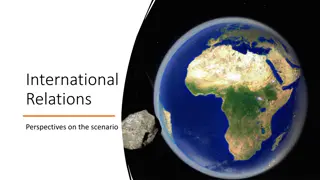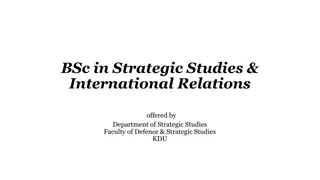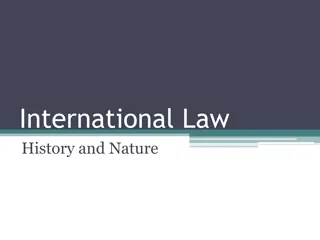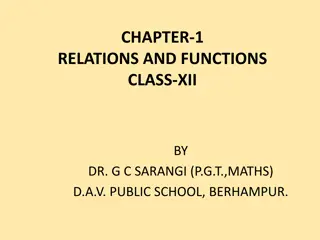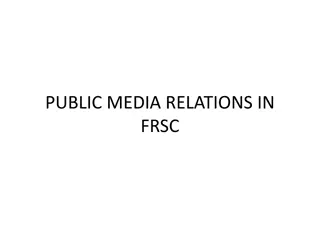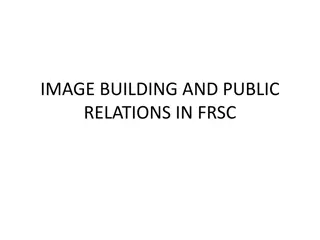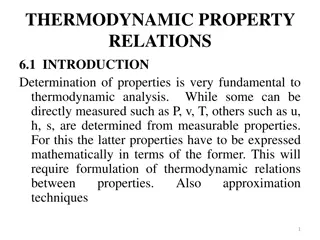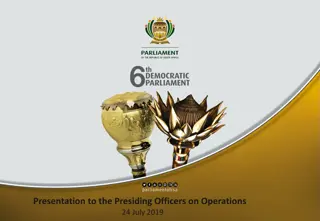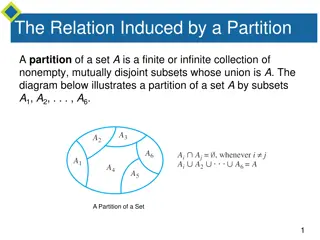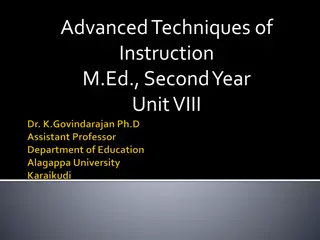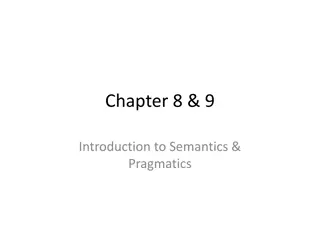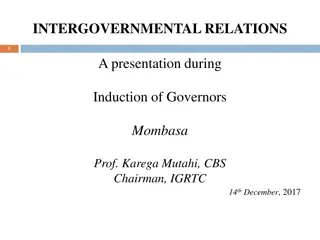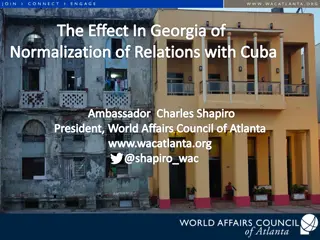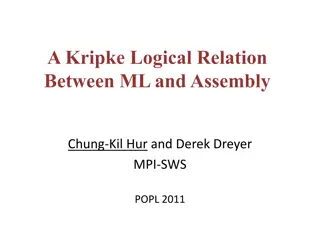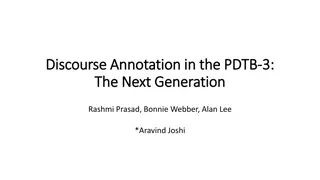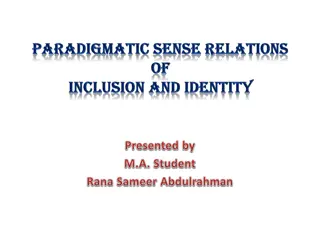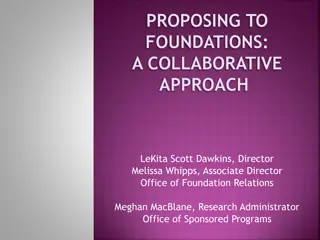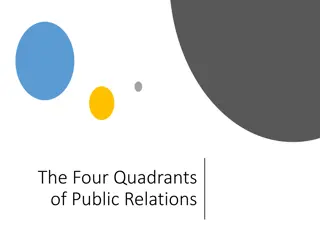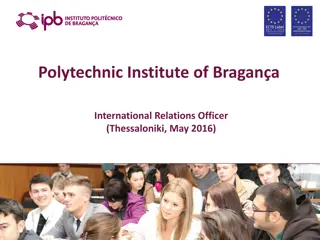Constructivism in International Relations
Constructivism in International Relations focuses on the social construction of ideas, norms, and institutions within the realm of foreign policy and state interactions. It draws on sociological theories and historical contexts to understand how states form identities, interact based on shared beliefs, and shape their foreign policies accordingly. This theory emphasizes the importance of social constructs, collective subjects, and the power of shared ideas in shaping international relations dynamics.
Download Presentation

Please find below an Image/Link to download the presentation.
The content on the website is provided AS IS for your information and personal use only. It may not be sold, licensed, or shared on other websites without obtaining consent from the author.If you encounter any issues during the download, it is possible that the publisher has removed the file from their server.
You are allowed to download the files provided on this website for personal or commercial use, subject to the condition that they are used lawfully. All files are the property of their respective owners.
The content on the website is provided AS IS for your information and personal use only. It may not be sold, licensed, or shared on other websites without obtaining consent from the author.
E N D
Presentation Transcript
Constructivism Social Constructivism Newest theory of IR Draws on sociology Max Weber Immanuel Kant Anthony Giddens Focuses on power of shared ideas
Social construction To construct something is an act which brings into being a subject or object that otherwise would not exist. Once something is constructed, it has a particular meaning and use within a context. It is a social construct in so far as its shape and form is imbued with social values, norms and assumptions. Social phenomena (states, alliances, international institutions) - collective subjects of international relations - take specific historical, cultural and political forms that are a product of human interaction in the social world.
Social constructivist theories outside IR Social constructivist theories developed in sociology and history before IR Notably Invention of childhood studies In medieval society the idea of childhood did not exist.
Constructivism Nation-states are not all alike Political culture shapes foreign policy Form of government shapes foreign policy History shapes foreign policy Domestic political trends and debates shape foreign policy
Constructivism States have identity State identity influences the way states interact with each other Examples: China sensitivity to any policies of other states that threaten its unity and sovereignty US desire to transform the world
Identity Definition: Understanding of who self is in relation to other Inherently social Identity creates interests
What are IR social constructivist theories? Idealist Far from an objective reality, international politics is a world of our making (Onuf 1989) Ideas shape reality Social reality is not objective or external to the observer Social world is recreated through intersubjectivity
A View of the World Not a theory of international relations, but a set of assumptions about how to study it. Realist power politics is one possible scenario of world politics, but not the only one. Reality is a social, not an objective fact. The Soviet Union disappeared, because people stopped believing in it (constructivist view) The Soviet Union disappeared, because she could not compete with the US and the West (realist view)
The Role of Ideas Ideas important in their own right International Norms: shared expectations about appropriate behavior held by the International Community Changes in norms lead to changes in state behaviors Examples: Sovereignty, Colonialism, Land Mine Treaty
The Role of Ideas II Identities and interests of states are not simply structurally determined, but are rather produced by interactions, institutions, norms, cultures. It is process, not structure, which determines the manner in which states interact. See Alexander Wendt, 'Anarchy is What States Make of It', International Organisation, 46/2, 1992.
Four types of ideas Ideologies or shared belief systems Normative (or principled) beliefs Causal beliefs Policy prescriptions
Ideologies or shared belief systems Are a systematic set of doctrines or beliefs that reflect the social needs and aspirations of a group, class, culture or state. Examples include the Protestant or Islamic ethics or political ideologies such as liberalism, Marxism, and fascism
Normative (or principled) beliefs beliefs about right and wrong. They consist of values and attitudes that specify criteria for distinguishing right from wrong or just from unjust and they imply associated standards of behaviour (for example) the role of human rights norms at the end of the Cold War
Causal beliefs Are beliefs about cause-effect, or means-end relationships. They provide guidelines or strategies for individuals on how to achieve their objectives. (example) Soviet leaders changing beliefs about the efficacy (or the non-efficacy) of the use of force influenced their decision in 1989 not to use force to keep Eastern Europe under Soviet control (compare to Hungary 1956 or Czechoslovakia 1968).
Policy prescriptions specific programmatic ideas that facilitate policymaking by specifying how to solve particular problems. They are at the center of policy debates and are associated with specific strategies and policy programs (tax cuts or tax increases, public investment and unemployment).
Norms Actors' behavior is guided by norms. Constitutive norms are standards of behavior that define the identity of an actor. Sovereignty is a constitutive norm of statehood. Regulative norms are appropriate standards of behavior for an actor with a given identity (capitalist states and free market)
Norms and State Behavior State Behavior and International Norms Mutually Constituted ACTORS (States) Behavior Interests Identities CONTEXT (System) Ideas Meanings Rules
From norms to institutions States (and other entities) act not primarily in response to material needs and interests, but to social norms. International institutions are neither insignificant (neorealism), nor are they only reflections of the cooperation among self-interested states (liberal institutionalism). Instead, they are fully autonomous and the primary carriers of world cultural principles.
The Power of Norms: Constructivism Norms The International System Global governance International institutions From norms to governance Power Expectations promoted by IGOs and NGOs Cooperation Socialization
What institutions do Punish and shame violators Result: States are constituted by norms and ideas Establish rules of appropriate conduct Create transparency Legitimize the mobilization of NGOs Express a global consensus among all states >>> Socialization of states
Constructivism: Summary States and international system mutually constituted in IR Ideas (separate from power) are important in shaping international relations Whether IR take place in an anarchical system of states or a legally ordered society of states is a function of divergent or convergent national identities
Nature of the International System The international system is not something out there like the solar system It is Socially Constructed/Contingent A human invention, a set of ideas, a body of thought, a system of norms, which has been arranged by certain people at a particular time and place It can be changed by new ideas Unlike realism and liberalism, whose causal epistemology draws from positivist (scientific) and structuralist (empirical) traditions, constructivism is post-positivist, deconstructing the ontological assumptions of other IR theories. Anarchy is what states make of it Alexander Wendt
(Socially) Constructed reality Anarchy is neither destiny (realism), nor a disincentive to cooperation (institutionalism). Anarchy is what states make of it. Alexander Wendt
Constructivist approaches to security states want security but concept of security not fixed security identities, interests and policies constructed through interactions between states (Wendt)
Comparing the Theories: Human Nature Realism: People are aggressive. Liberalism: People are acquisitive. Constructivism: People are shaped by their culture.
Comparing the Theories: Structure Realism: The anarchic structure of the international system dictates state behavior. Neo-liberalism: The anarchic structure of the international system constrains state behavior. Constructivism: The anarchic structure of the international system was created and is perpetuated by the very states it constitutes.
Comparing the Theories: Domestic Politics Realism: Domestic politics are unimportant. States are rational, unitary actors. Neo-liberalism: Domestic politics determine state attributes such as preferences and credibility. The behavior of domestic actors is funnelled through state hierarchy into a unitary, though not always collectively rational, policy. Constructivism: Domestic politics are integrated with global politics.
Comparing the Theories: Non-state Actors Realism: Non-state actors are unimportant. Neo-liberalism: States are the most important actors, but international organizations also matter. Constructivism: States are the most important actors, but international organizations and non- governmental organizations also matter.
Comparing the Theories: Key Questions Realism How can states best defend themselves? What kinds of international systems are most stable? Neo-liberalism How can states provide global public goods? How can states maximize their overall utility? Constructivism How do actors self-identify, and what action is produced by that identity? How do identities and value systems change?
Visualizing Theory REALISM Power CONSTRUCTIVISM Ideas Anarchy = Security Dilemma = Emphasis on Power Anarchy vs. Society National Identity Institutions LIBERALISM Anarchy mitigated by IGOs/INGOs/Intl. Regimes, Interdependence, Common Values, International Law etc



